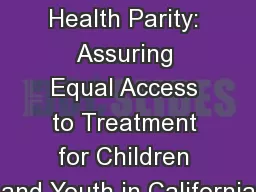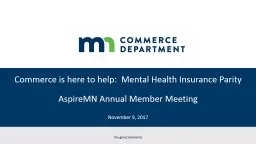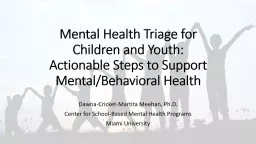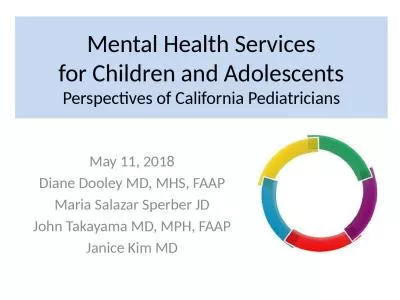PPT-Mental Health Parity: Assuring Equal Access to Treatment for Children and Youth in California
Author : liane-varnes | Published Date : 2018-03-21
Nancy Shea Mental Health Advocacy Services Inc August 16 2017 What This Webinar Will Cover Why this matters What is mental health parity Overview of mental health
Presentation Embed Code
Download Presentation
Download Presentation The PPT/PDF document "Mental Health Parity: Assuring Equal Acc..." is the property of its rightful owner. Permission is granted to download and print the materials on this website for personal, non-commercial use only, and to display it on your personal computer provided you do not modify the materials and that you retain all copyright notices contained in the materials. By downloading content from our website, you accept the terms of this agreement.
Mental Health Parity: Assuring Equal Access to Treatment for Children and Youth in California: Transcript
Download Rules Of Document
"Mental Health Parity: Assuring Equal Access to Treatment for Children and Youth in California"The content belongs to its owner. You may download and print it for personal use, without modification, and keep all copyright notices. By downloading, you agree to these terms.
Related Documents














